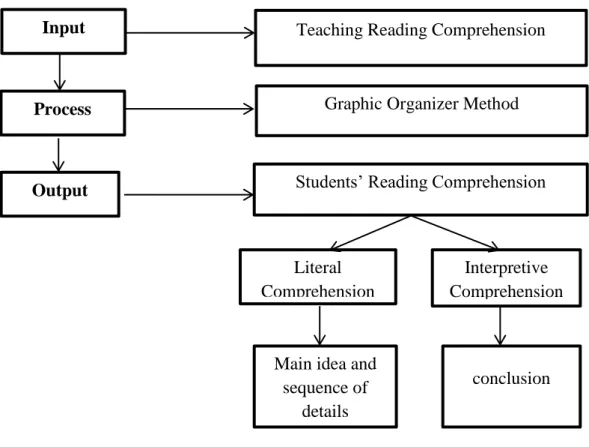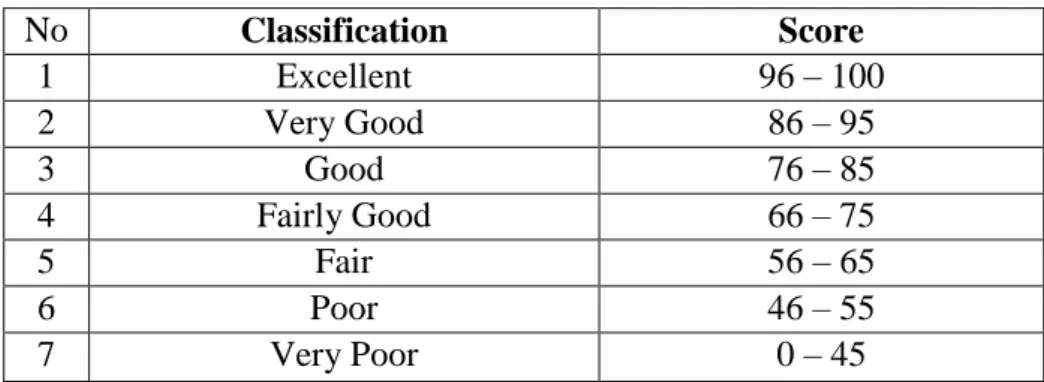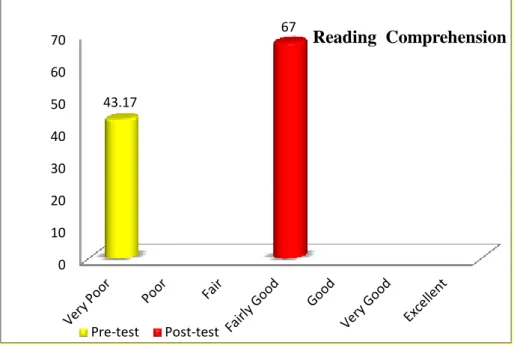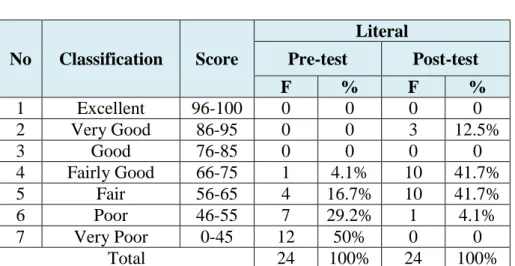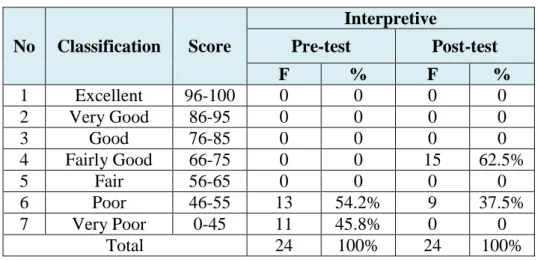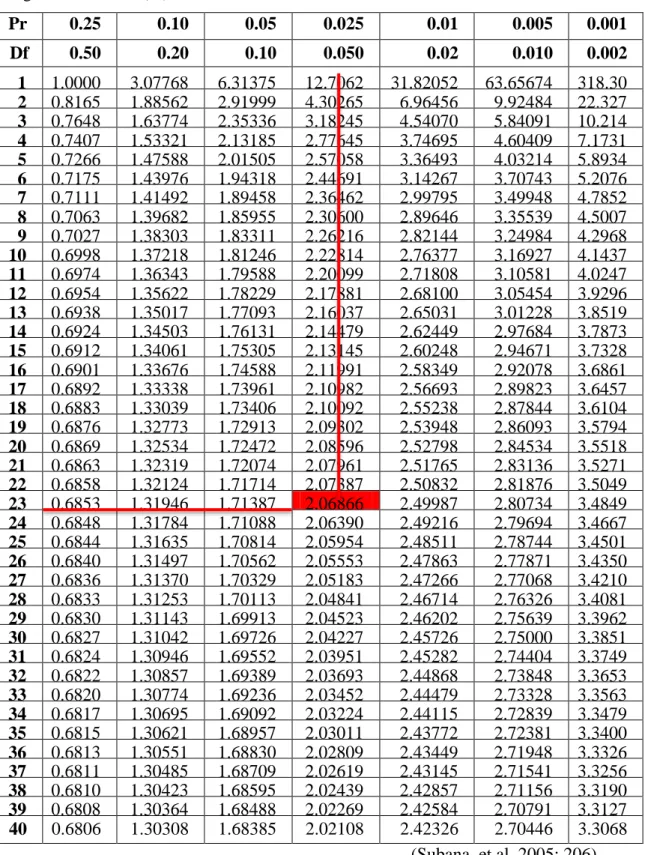The researcher realizes that many hands had given their help and useful suggestions for the completion of this thesis. Rahman Rahim SE MM., Chancellor of Makassar Muhammadiyah University for his advice during the research studies at the University. Heartfelt thanks to all the lecturers of FKIP UNISMUH, especially to the lecturers of the English Department and all the staff of Muhammadiyah University of Makassar for their guidance during the years of the researcher's study.
Finally, the researcher realizes that this thesis is far from perfect, so she hopes for criticism and suggestions to make it even better.
Background
This is a skill that requires more attention from the students who interact well with the text to get the meaning from the text. Students are expected to understand texts better when they are shown visually how information is organized in the text” (Jiang and Grabe, 2007). Improve the students' reading comprehension in terms of literal using Graphic Organizer (GO) method in the Eight Grade Students of SMP Negeri 3 Barru.
Does the student's reading comprehension in terms of interpretation improve by using Graphic Organizer (GO) method in grade eight students of SMP Negeri 3 Barru.
Objective of the Study
Significance of the Study
Scope of the Study
Previous Research Findings
Definition of Reading
According to Johnson (2008:3) it is said that reading is the practice of using text to create meaning. Based on Perfetti Reading is a process that depends on the language of the reader and the writing system that encodes that language. Based on the above definition, the researcher concluded that the definition of reading is an interactive process of receiving information and ideas from the writer to the reader.
Extended reading Extended reading is based on the assumption that exposing students to large amounts of meaningful and interesting L2 material will have a long-term beneficial effect on students' L2 mastery.
The Reading Technique
Intensive reading is an activity in which learners are mainly exposed to relatively short texts that are used either to illustrate specific aspects of the L2 lexical, syntactic or discourse system or to provide a basis for the practice of a target reading strategy; the goal of extensive reading, on the other hand, is to “flood” learners with large amounts of L2 input with little or perhaps no specific tasks to be performed on that material. Skimming takes place more through an activity that requires a comprehensive view of the text and implies a certain reading ability. Based on the above theory, the researcher concluded that skimming is a high-speed reading technique to find specific information.
Then, scanning is a technique to get a certain information quickly without reading others and intensive is a reading technique that is done carefully and carefully in the reading text.
The Concepts of Reading Comprehension 1. Definition of Reading Comprehension
- Types of ReadingComprehension
- Principles of TeachingReading Comprehension
- Strategies in ReadingComprehension
- Teaching ReadingComprehension
- Reading Comprehension Levels
In addition to the above concept, Brown mentions two types of reading comprehension based on reading performance. Readers read with intensive reading when they focus on the linguistic details of a text. After deciding which reading text the students will read, we need to choose good reading tasks - the right kind of questions, engaging and useful puzzles, etc.
At this level, teachers can ask students to find information and ideas that are explicitly stated in the text.
The Concepts of Graphic Organizer 1. Definition of Graphic Organizer
Function of Graphic Organizer
There is the Graphic Organizer that organizes information into categories, which in this way facilitates the definition of different concepts. Completing a graphic organizer is a complex process that requires deciding which graphic organizer is best suited for the given type of knowledge and cognitive processes. This decision involves the selection of the necessary knowledge and also the evaluation of the approach and of the intermediate and final results.
Completing a graphic organizer shows the teacher and student conceptual and perceptual errors.
Advantages of Using Graphic Organizer
Theoritical Framework
Hypothesis
The research method consisted of research design, research variable and indicator, population and sample, a procedure for collecting data and technique for data analysis.
Research Design
Treatment
Treatment was an important research process to improve students' reading comprehension. The treatment used the Graphic Organizer (GO) method and the narrative text as material in the learning process. In the first meeting, the researcher explained about the narrative text and how to use the GraphicOrganizer (GO) method in reading comprehension.
In the second to fourth treatment sessions, the students applied the Graphic Organizer (GO) method in the classroom using the researcher's prepared materials, which were about the narrative text c. In the fifth and sixth treatment sessions, the researcher asked the students to make four groups, and each group consisted of 6 students. Each session students were given a difference story on narrative text and students answered the question using the Graphic Organizer (GO) method.
Post-Test
Research Variable and Indicator 1. Research Variables
Indicators
This class was used as a research sample based on information from a classroom English teacher.
Instrument of the Research
Procedure of Data Collecting
Pre-test
Post-test
The researcher used only one class as a sample, namely VIII 4, which consisted of 24 students. In this activity, all students were given a narrative text with the same theme. The text consisted of five questions in the form of an essay test to determine the main idea, the order of details and the conclusion.
Technique of Data Analysis
Scoring the students’ correct answer of pre-test and post-test
P = Percentage of students X1 = Average pre-test score X2 = Average post-test score.
Rubric of literal comprehension and interpretive comprehension
1 Clearly identify the main idea by providing strong evidence, details related to the main idea. 4 The level of detail in each question is poor and does not attempt to include textually relevant information. 3 reflects resource readings in idea development it is poor 2 4 Conclusion does not reflect any reading of resources i.
The criteria for the hypothesis testing is as follows
The table above meant (1) that the t-test value is less than the t-table value, the null hypothesis is accepted while the alternative hypothesis is rejected and (2) the t-test value is equal to greater than the t-table value, the null the hypothesis is rejected and the alternative is accepted. This chapter is a response to the statement of the problem in the previous chapter consisting of findings and discussion. The findings showed a description of the result from the data collected with the pre-test and post-test reading test.
Findings
The Improvement of the Students’ Literal Reading Comprehension Using Graphic Organizer (GO) Method In Term of Main Idea and
Students' literal reading comprehension using the Graphic Organizer (GO) method is different in pre-test and post-test. Thus, the improvement in students' literal reading comprehension between pre-test to post-test was 43.07%. Based on the result of the analysis above, it can be concluded that in used Graphic Organizer (GO) method in the class the data was collected.
TheImprovement of the Students’ Interpretive Reading Comprehension Using Graphic Organizer (GO) Method In Terms of
Literal Reading
- The Improvement of the Students’ Reading Comprehension Using Graphic Organizer (GO) Method In Literal and Interpretive
- The Percentage of the Students’ Achievement in Literal and Interpretive Reading Comprehension Using Graphic Organizer (GO)
- Hypothesis Testing
- Discussion
- Students’ Literal Reading Comprehension in Term Main Idea and Sequence of Detail Using Graphic Organizer (GO) Method
- Students’ Interpretive Reading Comprehension in Term of Conclusion Using Graphic Organizer (GO) Method
- The Significant Difference of T-test and T-table
- Conclusions
Based on the table, it showed that improving students' reading comprehension using the Graphic Organizer (GO) method was successful. Thus, the improvement in students' reading comprehension in terms of interpretation between the pretest and the posttest was 70.29%. Improving students' reading comprehension using the Graphic Organizer (GO) method in literal and interpretive Graphic Organizer (GO) Method in literal and interpretive.
Pupils' reading comprehension using the Graphic Organizer (GO) method is different in pre- and post-tests. Based on the table, it indicated that the improvement of students' reading comprehension by using the Graphic Organizer (GO) method was successful. Based on the percentages above, there was significant improvement in students' reading comprehension by using the Graphic Organizer (GO) Method.
Percentage of students' achievement in literal and interpretive reading comprehension using the Graphic Organizer (GO) Interpretive reading comprehension using the Graphic Organizer (GO) method. The table above shows the students' reading comprehension score in verbatim terms in the pre-test and post-test. The table above shows the reading comprehension score of students in terms of Interpretation in pre-test and post-test.
Pupils' literal reading comprehension in term Main idea and sequence of details using graphic organizer (GO) method Sequence of details using graphic organizer (GO) method. Students' interpretive reading comprehension during the conclusion period using the graphic organizer (GO) method using the graphic organizer (GO) method.

LIST OF APPENDICES
INSTRUMENT OF TEST
- Materi Pembelajaran
- Metode Pembelajaran
- Kegiatan Pendahuluan (5 menit)
- Kegiatan inti (30 menit) Eksplorasi
- Kegiatan penutup (5 menit)
- Kegiatan inti (30 menit) Eksplorasi
- Kegiatan Penutup (5 menit)
- Kegiatan Pendahuluan (5 menit)
- Kegiatan inti (30 menit) Eksplorasi
- Penilaian
Of course the rabbit was very scared, but he didn't want the crocodile to know that. The crocodile tried again to catch the rabbit, but its large teeth only tore off the end of the rabbit's tail. The crocodile tried again and again to catch the rabbit, but the rabbit was too fast for him.
Kadang-kadang buaya menangkap sepotong ekor kelinci, namun ia tidak pernah bisa mengaum kepada kelinci karena ia telah kehilangan lidahnya. Siswa mendengarkan penjelasan guru mengenai metode grafik organiser yang akan mereka gunakan ketika merespons teks bacaan. Siswa bertanya dan menjawab pertanyaan tentang gagasan pokok, kesimpulan, dan permasalahan yang berkaitan dengan membaca teks naratif.
Guru membekali siswa dengan teks bacaan naratif disertai soal-soal bacaan berdasarkan materi yang dipelajari. Siswa mampu bertanya dan menjawab pertanyaan dengan guru bagaimana menemukan gagasan pokok, menarik kesimpulan dan menjawab pertanyaan. Guru membimbing siswa sesuai permasalahan Konfirmasi.. memberi penguatan dengan melakukan koreksi terhadap gagasan pokok dan menarik kesimpulan dari teks yang dibaca.
Siswa mampu bertanya dan menjawab pertanyaan dengan guru tentang gagasan pokok dan kesimpulan dari teks narasi. Siswa mampu menemukan gagasan pokok, menarik kesimpulan dan menjawab pertanyaan berdasarkan cerita dengan membaca teks narasi secara berkelompok. Siswa mampu menjawab pertanyaan dengan menggunakan grafik organiser berdasarkan pertanyaan yang diberikan oleh guru.
Siswa dapat menjawab pertanyaan dengan menggunakan grafik organiser berdasarkan pertanyaan yang diberikan guru secara berkelompok.
APEENDIX F.4
Literal Reading Comprehension
APEENDIX F.5
Scoring Classification of the Students Pretest And Posttest Scoring 1. Classification of the students pretest and posttest in Literal
Scoring Classification of the students pretest and posttest Interpretive
The percentage of the students' achievement in Literal No
The percentage of the students' achievement in Interpretive No
APPENDIX F.7
The Mean Score of Students’ Pre-test and Post-test in Students’
Average score of students post-test in terms of main idea and order of detail .. 3) Average score of the students' improvement in Post-test in terms of Main idea and order of detail.
The mean score of students Pre-test and Post-test in Students’
The mean scoreof students Pre-test and Post-test in Literal and Interperative Comprehension
APPENDIX F.8
Percentage of the Students’ Improvement in the students’ score in Literal Comprehension
The Percentage of the students’ Improvement in The score in Interpretive comprehension
The Improvement of the students’ score in Literal and Interperative Comprehension
